Mototank MT-25: the last wheeled-tracked
First, the Germans realized the lack of prospects for light tanks in the pre-war understanding of this term, ceasing production of such vehicles in the summer of 1942. In the USSR, the designers still did not give up attempts to improve the fighting qualities of the T-70. The result of these works was the appearance of the T-80 tank, but it happened, however, too late.
Meanwhile, initiative proposals came from the factories to create completely new light tanks. One such "rationalization" with the project of the MT-25 tank was sent from Chelyabinsk engineers addressed to Stalin 24 February 1943 of the year. The project differed from the majority of such letters with interesting ideas and good study, therefore it aroused interest in the Main Automobile and Armored Directorate. How did the creators conceived this tank and why was it not embodied in metal?
Ideas from practitioners
One of the main problems of the T-70, like its predecessors, was that the development potential embedded in it by the creators turned out to be small. In the design of the tank were widely used automotive units, simply not adapted to the "tank" loads. For this reason, the T-70 combat mass could not exceed 10 tons. Later T-80 "grew up" in mass to almost 12 tons, and this was already the limit. The possibility of forcing the power plant dried up, and a further increase in mass was fraught with a serious increase in problems with reliability.
In addition, the T-70 was very small. In order to make a double turret for T-80, the team of GAZ design bureau for them. Molotov, headed by N. A. Astrov, had to make heroic efforts. In this case, nothing larger than the 45-mm gun as a weapon could not be installed in the tank, and the long-barreled 45-mm tank gun BT-42 was never launched into the series.
Installing a double tower significantly complicated maintenance of the T-80, and the engine was now in close proximity to the loader, which clearly did not add comfort to his workplace. It is not surprising that the leadership of the Red Army Main Armored Directorate (GABTU KA) in the spring of 1943 began to glance again towards T-50, which, it seemed, finally went into oblivion at the very beginning of 1942.
Side projection of the MT-25. With a mass of 25 tons, it was only a 10 cm longer and a 10 cm higher than the 14-tonne T-50
One of the possible solutions to the problem of further development of light tanks appeared in a proactive manner. 24 February 1943 of the year a letter arrived to Stalin, which opened with the following words:
“In fulfilling our duty to the Soviet Motherland in the period of the bitter and heroic struggle of the Soviet people against the German fascist invaders for their honor, freedom and independence, we developed a new type of combat vehicle in the form of a draft design.
When developing a new type of combat vehicle, we were guided by the fact that the Red Army requires combat vehicles that possess:
1) High speed car;
2) Minor vulnerability in the sense of defeat;
3) Long range;
4) The suddenness of an attack on an enemy. ”
At that time, various rational proposals, including ideas for creating tanks, went to the GABTU KA and other specialized organizations. Dozens of such proposals fell into the department of inventions of the GABTU SC Some of them, such as the light tank of Lieutenant Provornova (LTP), looked extremely interesting.
Meanwhile, the invention to which the explanatory note cited above was attached is in the main inventory of the GABTU KA. This means that he was shown an increased interest. The authors of the proposal were engineers F. F. Gorodkov and A. I. Starodubtsev from Chelyabinsk.
They worked on a very remarkable plant number 200. This company, selected in 1941 from plant No. 78 (now LLC Stankomash), specialized in the production of hulls and towers for KV tanks, which were provided by the Chelyabinsk Tractor Plant (CTZ). The design bureau of the plant No. 200 closely cooperated with the ChTZ design team, which included many engineers who had previously worked at the Kirov plant in Leningrad. In addition, Plant No. 200 executed orders from the Design Bureau of Experimental Plant No. 100.
On the other hand, the MT-25 was wider than even the T-34
In short, the engineers of the plant number 200 had an impressive experience. Perhaps, therefore, the invention of F. F. Gorodkov and A. I. Starodubtsev turned out to be extremely extraordinary and possessed a number of interesting design solutions.
Heavyweight A-20
As the authors wrote in the preface to the draft design of their tank, which they called the "Mototank MT-25", when designing it, they mainly used technical literature and guidelines for the KV-1 and T-34.
Another source of necessary information was “personal practice in a defense plant,” and the influence of this practice itself is perfectly visible. The outline of the MT-25 is easily guessed by the KV-1. The characteristic “step” in the frontal part of the hull was preserved, and the tower was a reduced KV-1 tower. However, the light tank proposed by the engineers of the plant No. 200 had a number of fundamental differences from the KV-1, and this is especially true of the concept of its undercarriage (the style of the original document is preserved):
“The existing tank structures are mainly tracked tanks with raised sprockets and non-driven support rollers. The main disadvantage of this type of tank is that when a caterpillar breaks down, a tank loses its ability to move, although its internal mechanisms remained unharmed. In a combat situation, stopping the tank is equivalent to his death.
A new type of combat vehicle - the mototank, offered by us, is exempt from these shortcomings. Mototank is a wheeled, and if necessary, a tracked vehicle, in which all the supporting rollers drive. In the event of the destruction of the track chain or part of the road wheels, the machine does not lose the ability to move and can continue to hit the enemy, or, depending on the circumstances, get out of the battle with its own course. The new machine, therefore, has the property of low vulnerability of the undercarriage, it lives and moves as long as its motor is in operation.
The existing designs of tracked combat vehicles are limited by the type of vehicles in terms of speed and maneuver not exceeding 50 km / h, and only in wheeled-tracked vehicles does it reach the 70 – 75 km / h limit.
The proposed new type of combat vehicle - the mototank - uses the valuable quality of wheeled vehicles - greater speed of movement and maneuver. In the case of driving on wheels, the motorcycle is able to reach speeds of up to 100 km / h, and on average 40 – 45 km / h.
According to the proposed type of combat vehicle, light, medium, and heavy types can be constructed, since the design properties of a real type of MT vehicle allow it. Consequently, the scope of the proposed type of machine "MT" is not limited and is governed only by strategic considerations of the command ".
In other words, Gorodok and Starodubtsev offered a return to the concept of a wheeled-tracked tank, and the wheel course, in their opinion, was to become the main one. In difficult parts of the terrain, all-terrain chains were supposed to be used according to the type used on ZIS-33 trucks.
It may seem that the engineers of the plant number 200 did not invent anything with their wheeled-tracked tank, but this is not so.
Indeed, the ideas of wheeled-tracked tanks with a drive on more than one axis already existed. A great work in this direction was done by the inventor N. F. Tsyganov. Back in the spring of 1934, he began the development of a wheeled-tracked tank BT-2IS, which had a drive for the second, third and fourth pairs of road wheels. The maneuverability of such a tank was higher than that of the BT-2, but the very cumbersome drive system was not very reliable. Further development of the design of Tsyganov was used on the wheeled-tracked tanks BT-5IS, BT-SV and A-20.
In the front and rear view, it is noticeable that the MT-25 had to have voluminous internal cavities in the fences, which could be used for slugging and fuel tanks.
Meanwhile, the design proposed by Chelyabinsk inventors was radically different from what Tsyganov had invented. In BT-2IS and other similar tanks, the drive was carried out through a system of cardan shafts. In the case of the MT-25, a gear transmission was proposed, which was located along the side of the tank. It took up less space and was more reliable. In addition, the drive with its help was carried out immediately to all the track rollers.
In addition, the MT-25, as well as the HF, was supposed to use a torsion bar suspension, as opposed to a candlestick on a BT-IC and A-20. This solution significantly reduced the volume occupied by the undercarriage inside the tank.
Finally, about any turning wheels in the new project was not the question. According to Gorodkov and Starodubtsev, the MT-25 was supposed to be turned “in tank mode”, that is, with the help of onboard gears and friction clutches.
Driving suspension and drive to the support rollers
The MT-25 undercarriage was to consist of six twin wheels with a diameter of 700 mm on board, with neither sloths nor supporting rollers provided. The wheels were placed in a staggered manner, which has not been used in Soviet tank-building until now. The inventors thought of it themselves or saw the German half-track tractor - is unknown. But, in any case, the German arrangement of chess rinks was implemented differently.
Suspension close up
At this unusual solutions in the design of the MT-25 did not end there. The case looked extremely interesting, which, given the specialization of plant number 200, is not surprising. Just at the beginning of 1943, work was in full swing on an improved version of the EC-1 (KV-13) tank, in the production of which the casting was massively used. At MT-25, engineers suggested going even further and using casting much more widely. The rounded shapes of the hull directly hint that there were not many rolled parts in the hull.
Given that even in the autumn of 1940, the Izhora plant carried out successful work on the manufacture of solid casings KV-1 and T-211, the use of such technology for the manufacture of the hull of the light tank was quite possible. It remained only to weld the roof of the hull and install an overhead plate. The thickness of the armor was assumed to be in the 40 – 45 mm area, that is, at the T-34 level. In general, the authors of the MT-25 and compared their tank with the T-34, but the main armament in the form of 45-mm (in the description of 47-mm) guns suggests that this machine, rather, should be attributed to light tanks. This classification is also favored by the short length of the hull - the 5,3 meter, which is a total of 10 cm more than the T-50.
Non-standard chassis noticeably influenced the internal layout of the tank. The engine and transmission were located in the rear part of the hull, but at the same time, the inventors placed the transmission not behind, but in front of the motor. Due to this, it was possible to reduce the length of the body. Of course, with this arrangement, it would be more difficult to dismantle the transmission, but at the same time it was possible to maintain the transmission and friction clutches without leaving the tank.
The decision to transfer the engine forward engine was dictated by the all-wheel drive scheme. The gearbox was several in the fighting compartment, but did not take up much space.
As the power plant for the MT-25, the B-2K was chosen, with which the power density of the MT-25 reached impressive 24 HP. per ton. There are certain doubts about the km / h claimed by the inventors of 100, but the maximum speed at the level of the A-20 tank was quite achievable.
Longitudinal section MT-25. Even for an average tank there is quite a lot of space here.
Even for an average tank, the MT-25's combat compartment volume was quite large. Due to the large width of the hull (the overall width of the machine was 2900 mm) and the absence of bulky suspension elements in the sides of the tank, which is small in size, there was a lot of space. This allowed the inventors to optimistically indicate the size of the ammunition for 45-mm guns in as many 300 shots, and for machine guns - in 120 machine-gun disks. It sounds pretty bold, but just look at the large volumes hidden in the fences in order to believe in the plausibility of such calculations.
The number of crew members in the tower was not indicated in the project, but the similarity with the KV-1 tower, as well as even a slightly larger diaphragm diameter (1570 mm) suggests that a commander, a gunner and a loader could fit inside. The volume of the tower could well be enough to accommodate even an 76-mm gun inside. In the front, in the department of management, as on the KV-1, there was a driver-mechanic and a gunner-radio operator.
Forerunner of future technical specifications
The project MT-25 was considered, but no conclusions were made on it. On the one hand, the wheel layout looked too bold, and there was simply nowhere to produce such a car. On the other hand, the elaboration of the project turned out to be at a rather high level and was clearly beaten out from a number of other inventions that were sent, as a rule, of a conceptual nature. For this reason, the MT-25 and “hung” in the main inventory of the GABTU KA, being both unrealistic and technically curious development.
Reconstruction of the appearance of the MT-25. Author - Dmitry Shuvalov
There was, however, another reason why the proposal of F. F. Gorodkov and A. I. Starodubtsev was not in the department of inventions. The fact is that, conceptually, their tank fit perfectly into the tactical and technical requirements for a new light tank, which began to be developed in the spring of 1943. At first, in the GBTU, the KA attempted to revive the T-50 at a new level by installing an 76-mm gun in it. However, quite quickly the combat mass of the updated T-50 reached 20 tons, then crossed the mark in 22 tones, and in the end it was ... yes, those same 25 tons.
The Soviet tank builders were not the first to reach such a mass of the designed light tank. The pioneers were the Germans, in whom the VK 16.02 Leopard weighed almost the same at the end of development, after which work on it was stopped, because the characteristics of a light tank began to resemble the characteristics of an average tank.
The next were the Americans, whose 14-ton light tank T7 on the basis of turned into an almost 25-ton Medium Tank M7. Work on it was also stopped, but already at the production stage, since one more medium tank of the American army was clearly not needed.
Interestingly, the “threshold” combat weight for light tanks around 25 tons repeatedly surfaced in tank building after the war. A number of French and American developments, some of which were even embodied in metal, had a similar combat weight. And at least one tank with a similar mass (Light Tank M41 Walker Bulldog with a combat mass of 23,5 tons), the Americans even launched into the series.
Reconstruction of the MT-25 in the World of Tanks
The rapid growth of armor penetration of tank and anti-tank artillery by the beginning of 1943, forced tank designers to significantly increase the level of protection. For light tanks began to make demands for armor, which at the beginning of World War II did not even have medium tanks. Similarly, the requirements for armament grew. As a result, light tanks either became extinct as a class, or strongly modified.
In the USSR, relied on the revival of amphibious tanks with much more powerful weapons, so appeared PT-76. In the USA, at first, they chose the concept of lightly armored, but at the same time very mobile and well-armed light tanks (Light Tank M24 and Light Tank M41), but in the end they also came to amphibious tanks (M551 Sheridan).
For 1943, the weight category in 25 tons, chosen by the inventors of the MT-25, was too bold: at this time, tanks with such a mass belonged to the middle class. If we were able to raise the weight level of light tanks to this level, the concept of cheaper, light and mobile than medium tanks, machines with comparable thickness of armor and armament could successfully develop a few more years.
History, however, does not tolerate the subjunctive mood. In addition, the situation in the Soviet tank building in 1943 – 45 left very little chance for such a machine. 25 tons of mass meant that the production of such a light tank would require an assembly plant with production capacities similar to those required for the production of the T-34. In conditions when the order for the T-34 was the highest priority, the new tank with dubious prospects turned out to be without a production base.
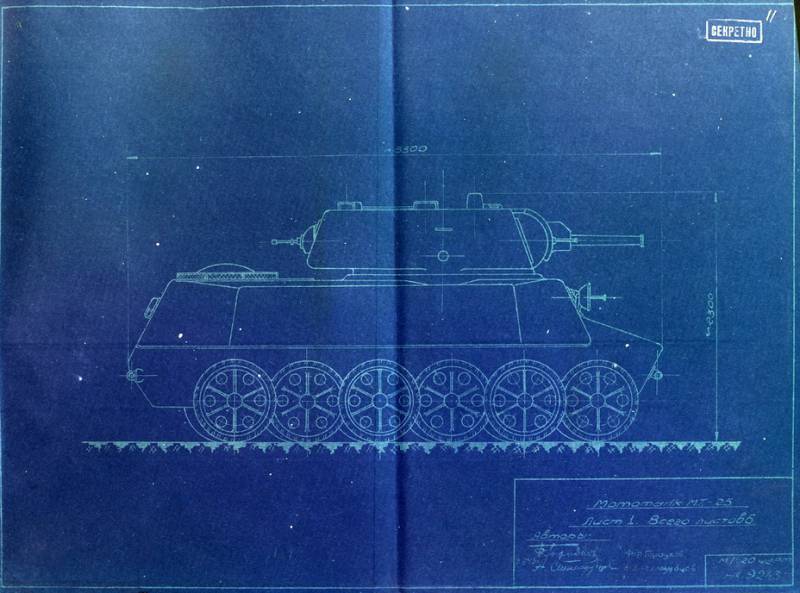
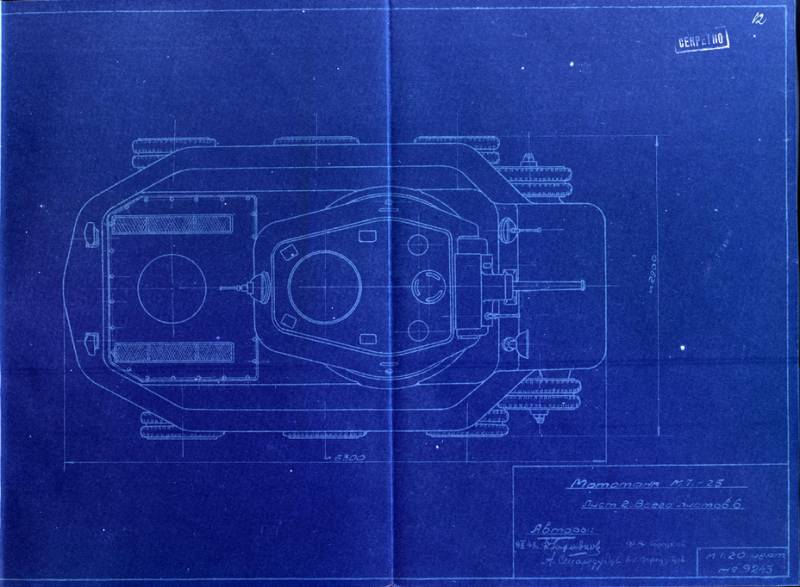
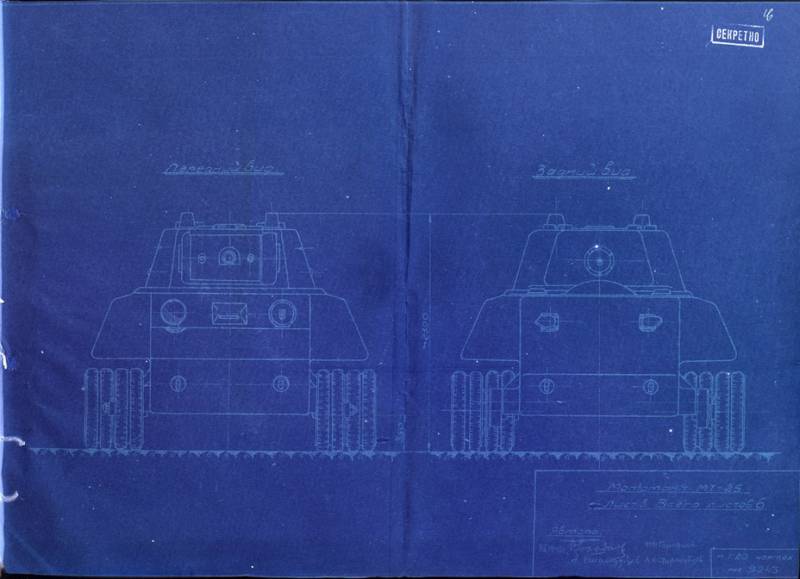
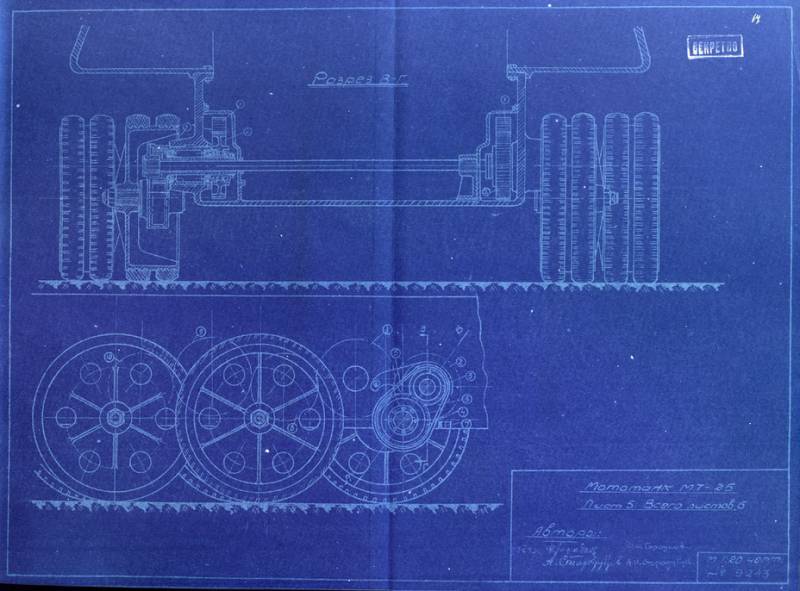
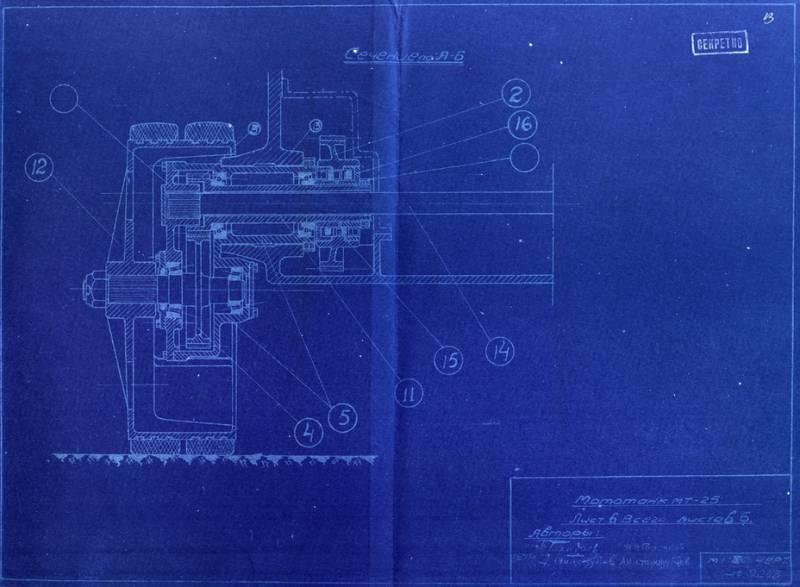
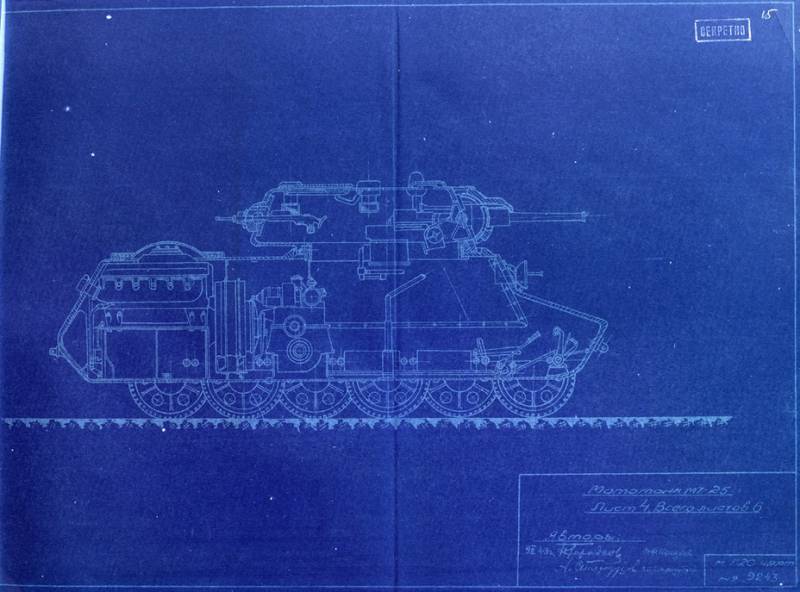
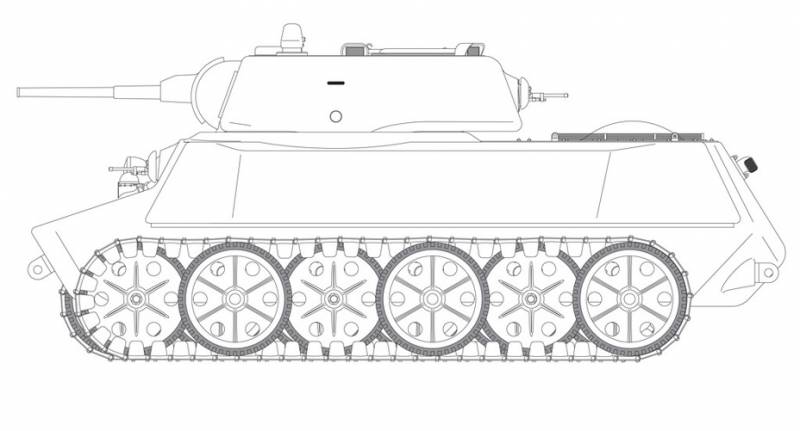
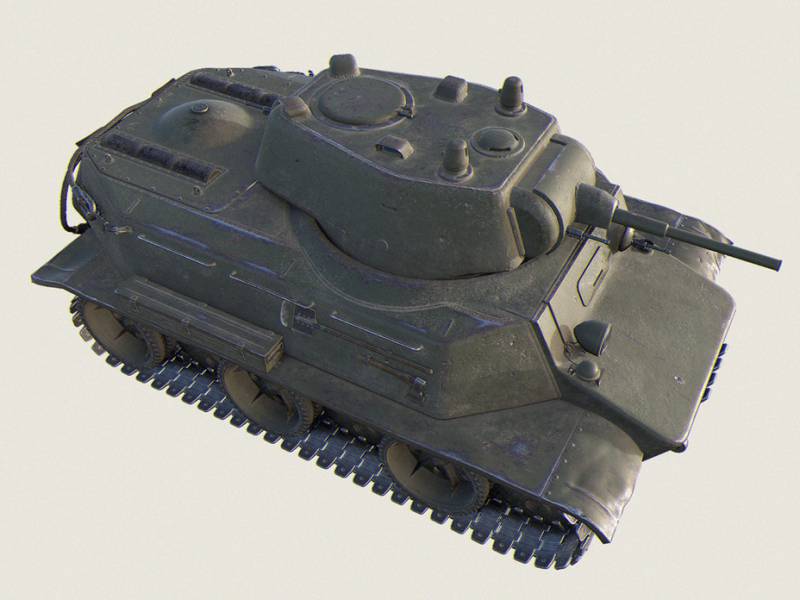
Information